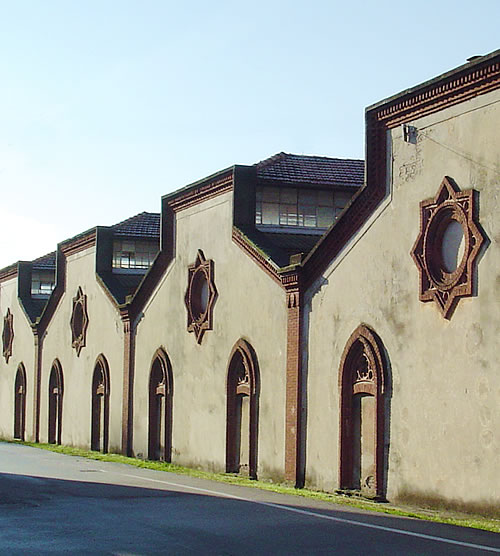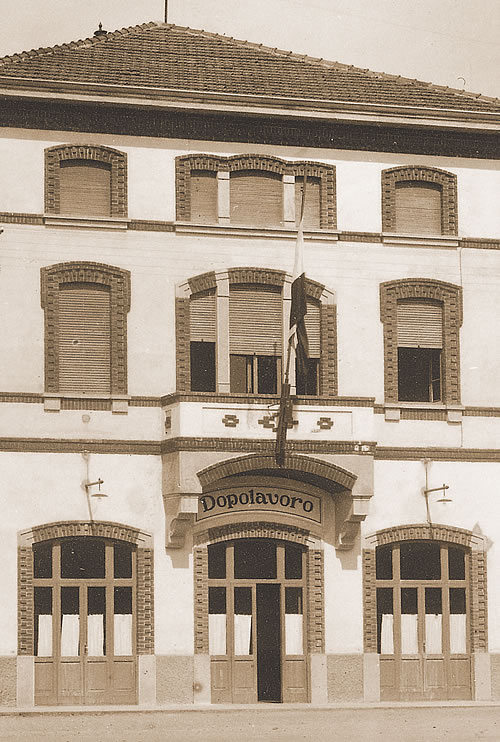内部の詳細
クレスピ村は、あらゆる意味で完全な自給自足の小宇宙でした。 近代産業の導入による影響で、社会が大きく姿を変えていった時代、社会生活に必要不可欠なサービスをまだ国家が提供できなかった時代に、 工場で働いていた工員たちは、家族もふくめ、その生活に必要な全てのサービスを保障され、提供されていました。

入口とオフィス
«The main entrance of the factory is the most memorable image of Crespi. It has a similar presence to that of a cathedral, where the chimney, the directors' offices and the wrought iron gate create a superb architectural composition, which became symbol of industrial architecture from the late 1800s.»

工場
«The factory of Crespi has got only one floor and it is characterized by decorations made of terra cotta and bricks. The factory's sheds are repeated in a fascinating row along the main street.»

城
«The villa of the Crespis reminds of an imposing medieval castle: a symbol of the master's presence. The castle illustrates the feudal hierarchy within the village, where the master governs from his castle over his modern industrial development: over his factory, his village and his workers.»

工員住宅
«The series of cottages lined up in order represent the most typical image of Crespi, at the very heart of the Village. These cottages look simple but pleasant and were conceived as a modern solution for workers' houses. Son of the founder, Silvio Crespi was inspired by the examples of workers' houses that he saw during his journeys in England.»

主任の家
«The workers' houses are not the only kind of dwelling in the Village. During the twenties, the Crespi's decided to build some villas with an eclectic style. These villas are beautiful, elegant and capricious, and were assigned to the directors and clerks.»

教会
«The church of Crespi d'Adda is the exact copy of the Renaissance church (school of Bramante) in Busto Arsizio. The Crespi family - who came from Busto Arsizio - wanted to recreate the same temple in their Village, as a reminder of their own town and of the Italian Renaissance.»

学校
«The school was intended to be both a useful service for the growing population and a means for preparing future workers. The pupils were not only taught about reading and writing at school, but they were also taught the skills that were required to be a worker.»

余暇活動センター
«The Community centre was created for leisure and cultural activities. The workers could meet here after hard work in the factory. The centre included also a library and a bowling lawn.»

洗濯場
«The wash house allowed the washer-women to wash their clothes near the houses, avoiding a long walk to the river carrying heavy baskets full of clothes.»
墓地
«The cemetery of Crespi lays at the end of the main street. It is characterised by the Crespi chapel - a decorated tower-pyramid of exotic taste and eclectic style, which is the tomb of the Crespi family. The monument rises to embrace the workers' graves: small crosses disposed in order in the meadow.»


